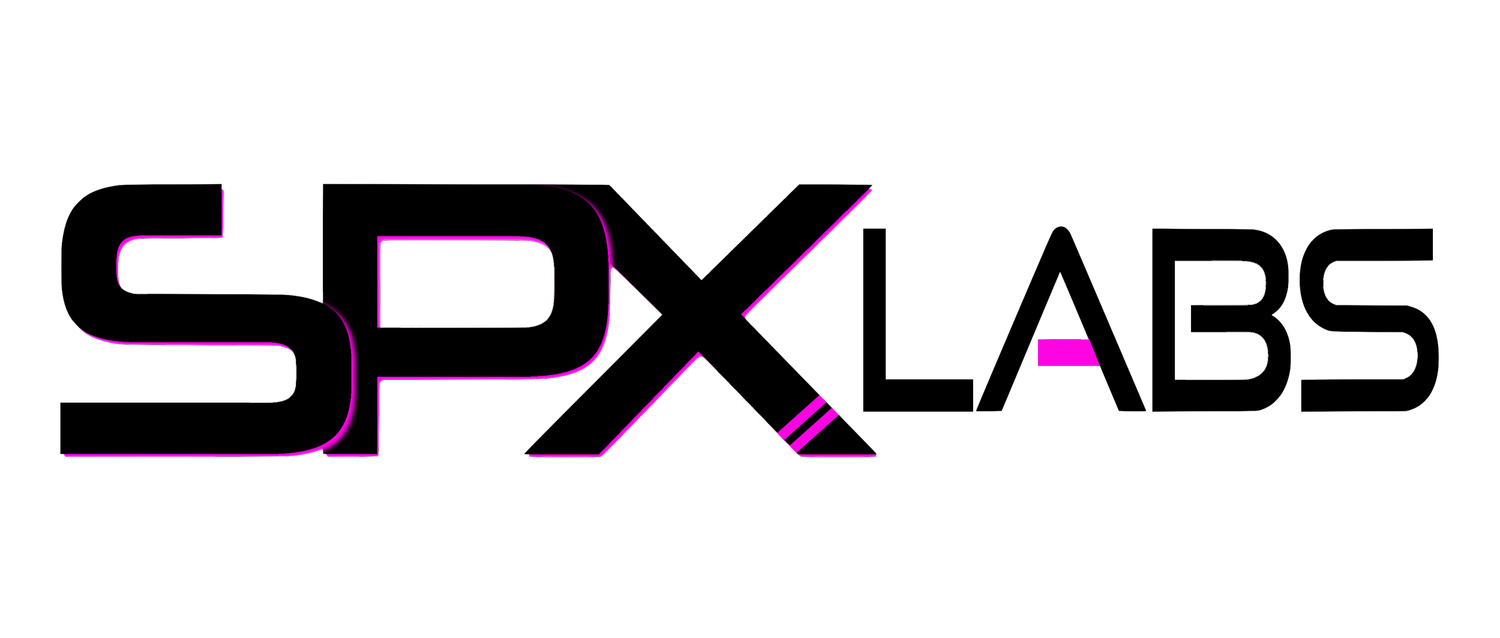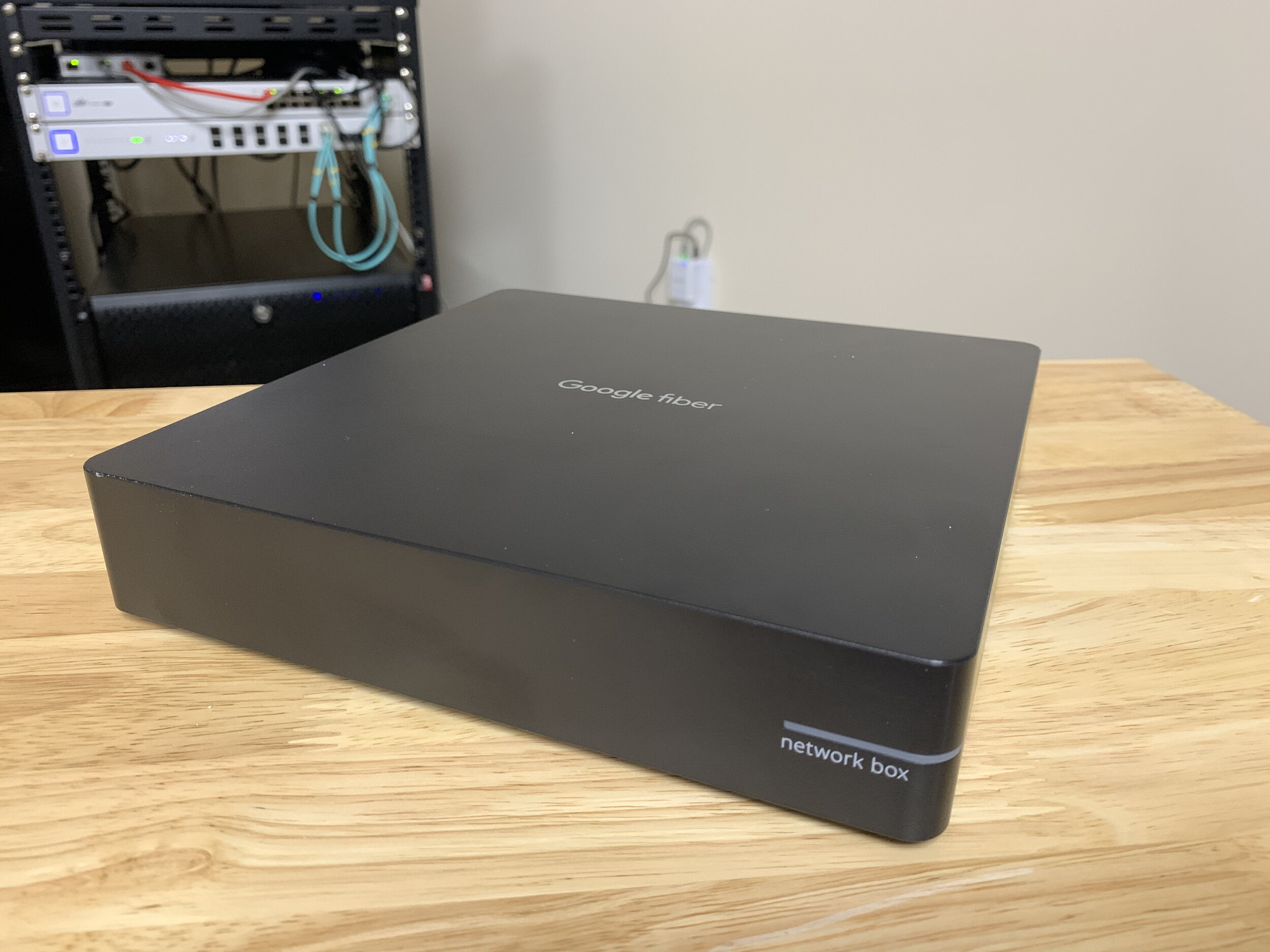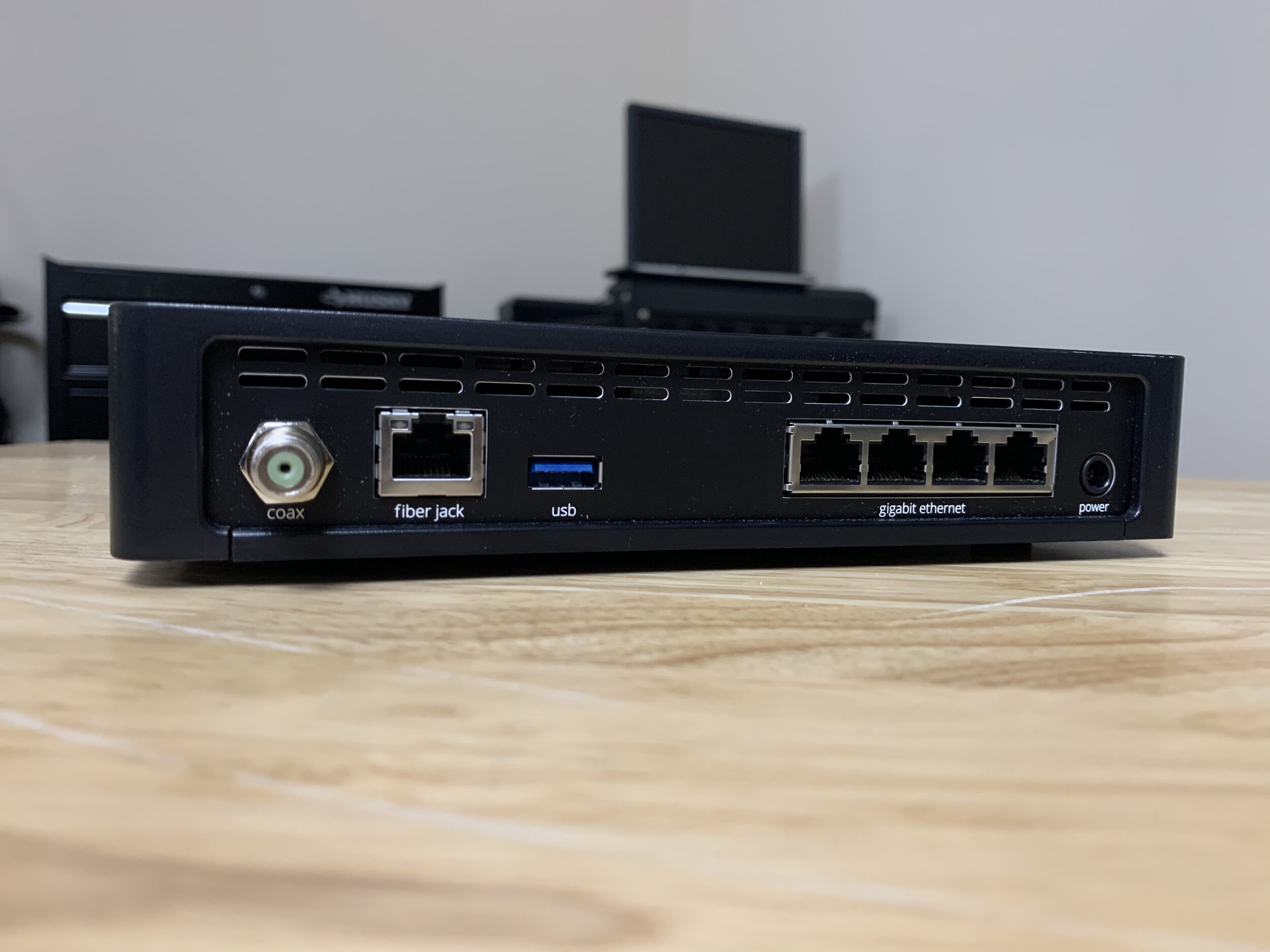Google Fiber Gigabit Internet and Ubiquiti UniFi
/Finally, gigabit internet is here and wow, what an upgrade. Now that I have had a taste of gigabit internet it is going to be so hard for me to go back to regular cable internet. Anyway, getting the UniFi USG to work with Google Fiber was easy peasy. I quite literally plugged it in and was done. Let’s jump right in.
The Goods
First things first let’s see what gear Google provides when they install your service.
The Fiber Jack (sometimes called fiber wall jack)
The fiber jack is an “Optical Network Terminal” for your line. Or in other words, this is where your fiber line is converted from an optical connection to a copper one, more specifically cat5e.
What does the Fiber Jack do?
After the conversion, it provides internet to the Network Box
It also acts as a WiFi access point
How is the Google Fiber Jack powered?
It can be powered by any 802.3af complaint power over ethernet(PoE) device or PoE injector.
Alternatively it can be powered via Micro USB cable and USB wall charger, like my iPhones charger.
Personally, I think a PoE Injector would be the cleanest way to power the jack if you decide not to use the Network Box Google provides OR if your router does not provide PoE. I say that because it would probably be pretty easy to hide the injector and power adapter that connect to it while you have a nice long ethernet run to the fiber jack. In my case, my UniFi USG does not provide PoE power to the Google Fiber Jack, so I have to use my iPhone charger and a Micro USB cable. It isn’t the cleanest setup but it’s what I had laying around and available.
Network Box
The network box provides power to the Google Fiber Jack and also acts as a router. You can connect up to 4 ethernet devices similar to most consumer routers off the shelf. While I haven’t fully confirmed this next statement, I am under the impression that the Network Box is also responsible for splitting the TV service connection and the Internet service apart. The reason why I think this, is because of some problems other users have reported, we will get into this later.
The Setup
I have chosen to disable the WiFi from the Fiber Jack and also forgo the use of the Network Box. Why? Well, I have all this really sweet Ubiquiti gear and I want to use it. I mean after all I bought the stuff for a reason…
Anyway, here is a incredibly basic depiction of what the network looks like.
Installation
Google service includes free installation and free equipment (price could be built into service fee). As part of the installation service your tech will ask you where you would like to have your Fiber Jack installed. Our tech literally asked which room, weighed pro’s and con’s of some rooms, and also tried to understand my desires to help me chose where to drop the Fiber Jack. We opted to install it in the “lab” of course.
Connecting the USG to the Fiber Jack
For me, this was straight up as simple as taking the Cat5e cable at the base of the jack and plugging it into the USG and then providing power to the jack via Micro USB. I did not need to make ANY configuration changes to my USG and I only have Gigabit service.
Potential Performance Issues
Some issues may be area dependent, configuration dependent, and hardware dependent. For my sake, I will only discuss the USG. Of the following, the only issue I have is the first one, which I was well aware of months before buying the USG.
The USG is known to not be able to reach FULL Gigabit speeds with Intrusion Detection System (IDS)/ Intrusion Prevention System (IPS) services enabled. See here or here for other discussions.
Depending on your area you may need to enable a VLAN ID and Enable QoS. This applies to anyone who only has internet service, if you have TV service as well, you are on your own for figuring the issues :(
DHCP should be enabled on the USG so it can automatically get an IP Address from Google.
Speed Tests
These speed tests are from using my equipment only. I am not providing speed tests of the Fiber Jacks WiFi capability because I will only be using my UniFi AC Pro. Also this isn’t a review so I don’t feel obligated to provide one.
Google Speed Test
Fast.com
SpeedTest.net
AT&T via dslReports.com, lol this one looks like an ad….
Valve - Steam Download
My Experience so far….
Having Google Fiber is really to add another tick in the ol box for my home lab setup. As in, not only do I get to flex the UniFi muscle on my local LAN but now I can also flex on the internet. Now multiple devices are able to upload or download at near Gigabit speeds and it is absolutely fantastic, especially for $70 USD a month. Holy cow.
Sure, the USG may not hit full Gigabit with IDS/IPS enable but 90% of the time I would be lucky to see 800Mbp/s up and down. I’m sure there is plenty of other equipment out there that would be great for home use but oh boy, does the Ubiquiti equipment bring a smile to my face especially when paired with Gigabit internet.
Google Fiber service can best be described as…. inconsistent, especially for upload speeds. Most of the time I feel like I am getting 800Mbp/s almost 98% of the time throughout the day. My upload speed however can be all over the map and at any given time it can be 200Mbp/s >. Sometimes when uploading to YouTube, I will only be uploading around 100Mbp/s. Yeah, that is uploading to a Google service! I could count on one hand the number of times I’ve definitely hit 900Mbp/s while uploading to the internet and only 1 of those times was to YouTube.
The latency…. Oh boy, for me this is the biggest problem because it is wildly inconsistent. It is so inconsistent I can’t even measure it. It almost seems like every 15 to 30 minutes my latency will spike through the roof. I can see hundreds sometimes almost thousands of milliseconds of latency. This is most noticeable while gaming. Things can be going great, then BAM, instant rubber banding. Sometimes it’s so bad I feel like I just walked back into the mid to late 90’s of internet. Seemingly however, on some days it’s beyond perfect, I’m talking sub 6 milliseconds and sometimes maintaining 1 millisecond for hours on end.
Too be fair, bandwidth and latency are not entirely Google’s fault, it could be shear distance of hub to hub to server or just poor server performance from other vendors/services, such is the case when downloading from Steam or Origin. Most annoyingly however, is when trying to connect to YouTube or other Google Services and having to wait 1 to 2 minutes for a website to load. First world problem I know, but I haven’t had to deal with these kinds of load times in over 15 years. Also, the situation is exasperated because this can happen while trying to get to Google.com!!!!
Despite the inconsistent service, I haven’t quite been brought to my knees yet. I’m giving Google a chance because they laid brand new lines about 4 months ago (time of writing Jan 28, 2020). So I hope my problems are just growing pains and they will be resolved eventually. Unfortunately, I will be moving in two months and losing Google Fiber when I get to my new area, *crying noises intensify.



